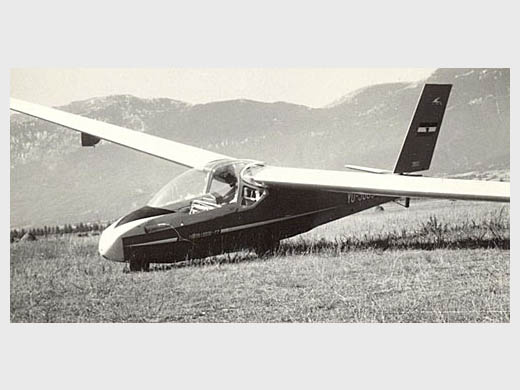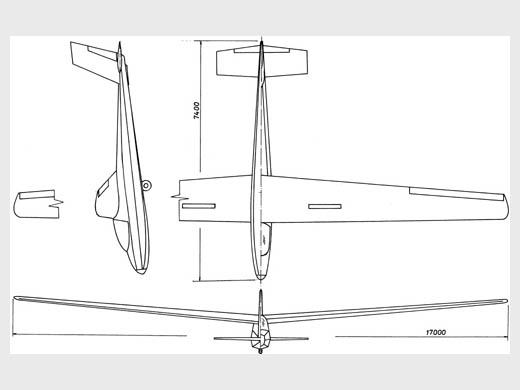| Histoire résumée | The Libis-17 was a Yugoslavian two-seat tandem high-performance training sailplane first flown in 1961. The Libis-17 was a high-wing cantilever monoplane of mixed construction and a top speed of 222 kmh in smooth air.
The LIBIS-17, originally known as the LIBIS KB-17, was designed to provide tandem seat training in advanced gliding flight, including aerobatics and cloud flying, as well as solo experience to gold and silver C standard as a single seater. It had a high wing of 5° dihedral, built around a single spar. The leading edge was a plywood torsion box, supported by Styrofoam, and the rest of the wing was fabric covered. The ailerons were of the Frise type, wooden, foam filled and fabric covered. It had Hütter type plate spoilers just behind the spar. Both vertical and horizontal rear stabilizers were all-moving, single piece surfaces, fitted with servo tabs. Both were wooden structures, near-rectangular in shape, with Styrofoam filling.[1]
The fabric covered fuselage had a steel tube structure. The wing was mounted on a pylon which formed the rear of the cockpit. This seated two in tandem, under a framed, forward hinged, single piece canopy. A transparency in the wing leading edge assisted the upwards visibility from the rear seat. Aft of the wing the fuselage was slender and of rectangular cross-section. The LIBIS-17 had a bicycle undercarriage with a single mainwheel, fitted with brakes, and a smaller nosewheel.[1]
The prototype LIBIS-17 first flew in October 1961. The first production aircraft followed in June 1963 and 12 had been built by the following Spring, with production continuing.[1] There is photographic evidence of a motorised version, with an engine and propeller on a mast above the wing.[2] |




